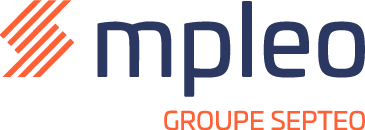
AI Assistant: 4 tips for making Generative AI an ally of HR
For a long time confined to technical tasks or data analysis, artificial intelligence (AI) is now fully entering the field of human resources. The emergence of generative AI, embodied by tools such as ChatGPT, has marked a turning point. It is no longer merely a tool for analysis but can become a true AI assistant for everyone, including HR professionals. These technologies are capable of engaging in dialogue, drafting content, summarising information, and even providing personalised recommendations.
AI represents a major opportunity for HR: saving time, improving service quality, offering personalisation, and enhancing accessibility. The topic is more relevant than ever. But how can HR teams harness it to make AI a real ally in their daily work?
Understanding generative AI: an AI unlike any other
Before using it, it is important to understand what sets generative AI apart from other forms of artificial intelligence. Unlike “traditional” AI, which relies on rule-based engines or predictive algorithms, generative AI can create original content based on natural language instructions.
It draws on powerful language models trained on billions of texts, enabling it to write, summarise, answer questions, and generate ideas. It is precisely this ability to understand and produce human language that makes it particularly useful for HR, where written communication and interaction are at the heart of the profession. Far from replacing HR professionals, generative AI acts as a virtual collaborator, capable of providing fast, reliable, and personalised assistance.

How to make generative AI your assistant for Human Resources
Implementing a strategy for adopting generative AI within HR is not something that can be improvised. Here are 4 tips to make this technology a truly intelligent, secure, and useful AI assistant for HR:
Identify suitable Case studies
Before integrating AI into your HR processes, start with a review of your current practices. Where are the daily points of friction? Which repetitive or time-consuming tasks are unnecessarily occupying your teams? It is precisely in these pressure points that AI can become a real lever for efficiency. To guide you, here are a few concrete examples of use cases:
- Writing job advertisements: AI can generate attractive job postings while adapting to the tone and values of your organisation.
- Responding to applications: AI can generate personalised automatic responses to job applications.
- Preparing interviews or evaluations: AI can create interview guides or summaries of key points from a candidate’s or employee’s journey.
- Training and internal communication: AI can develop content for e-learning modules or documents to raise awareness about remote working, for example.
The objective is not to automate all HR tasks, but rather to target those with low added value, where AI can truly assist you. This will allow your HR teams to free up time and focus on higher-value activities: strategy and talent development.
Training HR Teams on these new tools
A technology only holds value if it is well understood and properly used. To fully leverage the potential of generative AI, it is essential to support HR teams in developing their skills. Training can take several complementary forms:
- Workshops on how to use tools such as ChatGPT or an HR assistant integrated into your HRIS.
- Sessions on best practices for formulating prompts effectively.
- Awareness-raising about the limitations of AI: data security, bias, and more.
True adoption comes through practice. By experimenting with AI on real-life cases, HR teams can quickly appreciate the tool’s potential and the best practices to apply.
Maintaining a critical eye on the content generated
As powerful as it may be, generative AI remains prone to errors. It can lack nuance, misinterpret a request, or produce imprecise content. It is therefore crucial to implement a process of human review, particularly for sensitive communications (such as disciplinary matters or contract terminations), and for legal or contractual documents.
Think of these tools as ultra-fast writing assistants. Your AI assistant can provide a solid foundation, but should never publish autonomously. Human value remains essential to ensure accuracy, tone, and compliance.
Ensuring Data confidentiality and security
The data handled by HR is often personal and confidential. Its protection cannot be left to chance. The use of generative AI must therefore be governed by a strict framework, compliant with GDPR regulations. To achieve this, make sure you choose tools that offer strong guarantees regarding:
- Secure storage of information (ideally within Europe).
- Non-use of data for future AI training purposes.
- Traceability of exchanges, particularly for audits or legal disputes.
If you use public tools like ChatGPT — for instance, to generate an automatic response to a CV — you must exercise extreme caution. Never share personally identifiable information (such as names, addresses, contractual data, etc.). Prefer the use of anonymised data and ensure any sensitive information is removed before submitting your request.

Key takeaways
Generative AI has the potential to profoundly transform the HR function: saving time, improving responsiveness, personalising interactions, and making information more accessible — all concrete opportunities to enhance the quality of HR services on a daily basis.
However, these benefits must not obscure the limitations: AI remains a tool, sometimes imprecise, that neither understands complex human contexts nor captures emotional nuances. It cannot, and should not, replace the expertise, judgement, and human connection that are at the heart of the HR profession.
The challenge is not to make artificial intelligence an alternative to HR teams, but to establish it as genuine support — an assistant serving a more agile, more available HR function, always focused on people.

